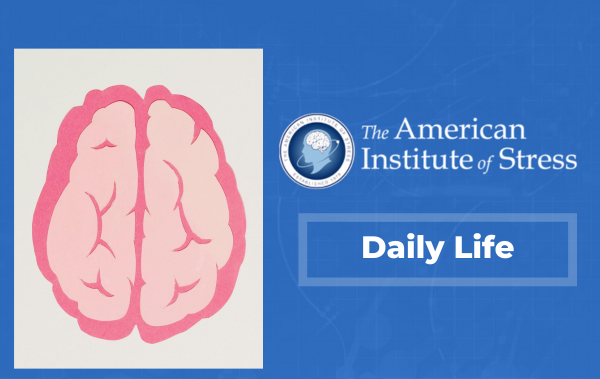Post-traumatic stress disorder (PTSD) occurs in some people after they’ve witnessed or experienced a tragic event. Signs of PTSD include avoidance of flashback-inducing triggers, intrusive memories that disrupt daily life or sleep patterns, unpredictable mood swings that seem to come out of nowhere, and behavioral changes such as engaging in reckless activities or having an exaggerated startle response.
PTSD can happen to anyone who’s witnessed or experienced a traumatic event. Globally, about 70% of the world’s population is exposed to traumatic events in their lifetime, and 7% (1 in 10 people exposed to traumatic stress) will develop post-traumatic stress disorder.1
This article discusses four ways to tell if you or someone you know might have PTSD and when it’s vital to get emergency help.

Avoidance
Avoidance is a core symptom of post-traumatic stress disorder. The two types of avoidance associated with PTSD are:2
- Behavioral avoidance
- Emotional avoidance
Behavioral avoidance involves physically avoiding people, places, sounds, or smells associated with a traumatic event. For example, a combat veteran who associates the smell of diesel fuel with seeing people die during active duty may avoid going to the local gas station.3
Emotional avoidance involves avoiding thoughts or feelings associated with a traumatic event. Onlookers may not notice that someone with PTSD is avoiding certain thoughts or memories; sometimes even the person who’s been through trauma such as emotional abuse may not realize they’re using avoidant coping strategies. For example, people who’ve experienced sexual trauma often block out their recollections of a traumatic event by practicing emotional avoidance.4
Avoidant coping strategies can include the maladaptive use of drugs, alcohol, and emotional eating to shut down and avoid thoughts or feelings related to personal trauma.56
Intrusive Memories
Intrusive symptoms are a hallmark of PTSD and typically take the form of intrusive memory experiences (IMEs) or nightmares. For people with PTSD, the intrusion of unwanted memories is usually out of their control. Intrusive memories are often triggered by sensory stimulation, such as a smell or the sights and sounds associated with being back in the location where trauma occurred.7
For example, if someone had a life-threatening accident on July 4th, all the smells and sounds associated with Fourth of July festivities, such as barbecue smoke, lighter-fluid fumes, and exploding fireworks, could trigger IMEs.
First responders who treat accidental fentanyl overdoses and must administer Narcan (naloxone), a lifesaving medication that can reverse an opioid overdose, commonly develop intrusion-related PTSD symptoms. These symptoms are triggered by stimuli like locations or smells related to the opioid overdoses they’ve witnessed.8 Repetitive exposure to trauma, such as this, can cause a subtype of PTSD called complex post-traumatic stress disorder (C-PTSD).9
Mood Swings
Individuals with PTSD often experience mood swings and have difficulty regulating their emotions. They may struggle with negative thoughts about themselves and the world they live in, leading to a sense of fear and estrangement from others. This can greatly decrease their willingness to engage in activities.
Additionally, people with PTSD may exhibit heightened emotional reactivity. This can result in irritability, angry outbursts, reckless behavior, and being easily startled.10
Behavioral Changes
Behavior changes associated with chronic stress, anxiety, depression, and fear often go hand in hand with PTSD. People may avoid specific trauma-related stimuli that might trigger flashbacks, such as fireworks reminding them of explosions. People with PTSD can be in a constant state of high alert that disrupts daily life and sleep patterns.11
Not being able to unwind can lead to behavioral changes associated with PTSD, such as not wanting to hang out with friends and family (antisocial behavior), not being able to have fun during leisure time, and or losing interest in hobbies or other once-enjoyed activities.12 PTSD is also linked to risky behavior, such as thrill-seeking or unsafe sex.13
PTSD Symptoms Can Vary in Intensity
PTSD symptoms often vary in intensity over time. Some people who are exposed to trauma don’t have any signs or symptoms of post-traumatic stress disorder for years, but then, one day, they suddenly experience intense PTSD symptoms. This reaction is called delayed-onset PTSD or delayed expression PTSD.14
Oftentimes, in the immediate aftermath of a traumatic event, there’s an initial sense of relief and gratefulness to still be alive. However, over time, PTSD symptoms of varying intensities can gradually arise when vivid flashbacks are triggered. A person with delayed-onset PTSD experiences intense feelings as though they’re living through the trauma all over again.15
When to Get Emergency Help
Get emergency help if PTSD symptoms cause you to think about hurting yourself. If you or someone you know is having thoughts of suicide or self-harm, call or text 988 for the Suicide & Crisis Lifeline. If it’s a life-threatening emergency, call 911 immediately.
In Crisis? Call or Text 988
Free help is available 24 hours a day at the 988 Suicide & Crisis Lifeline in English or Spanish for anyone having a mental health crisis or experiencing suicidal thoughts. You can communicate anonymously with a trained crisis expert at the lifeline any time, day or night, via text message, online chat, or by phone.
Summary
Post-traumatic stress disorder can occur in anyone who witnesses or lives through a tragic event or series of events. Not everyone who experiences trauma develops PTSD and its symptoms, which include avoiding places or thoughts that trigger flashbacks and experiencing unpredictable mood swings.
PTSD sometimes doesn’t surface until years after a traumatic event. If signs of PTSD, such as avoidance, intrusive memories, mood swings, or behavioral changes, have recently emerged and are disrupting your daily life, speak to a healthcare provider or mental health professional. If you’re in crisis and thinking about hurting yourself, call or text 988. In emergencies, call 911.





